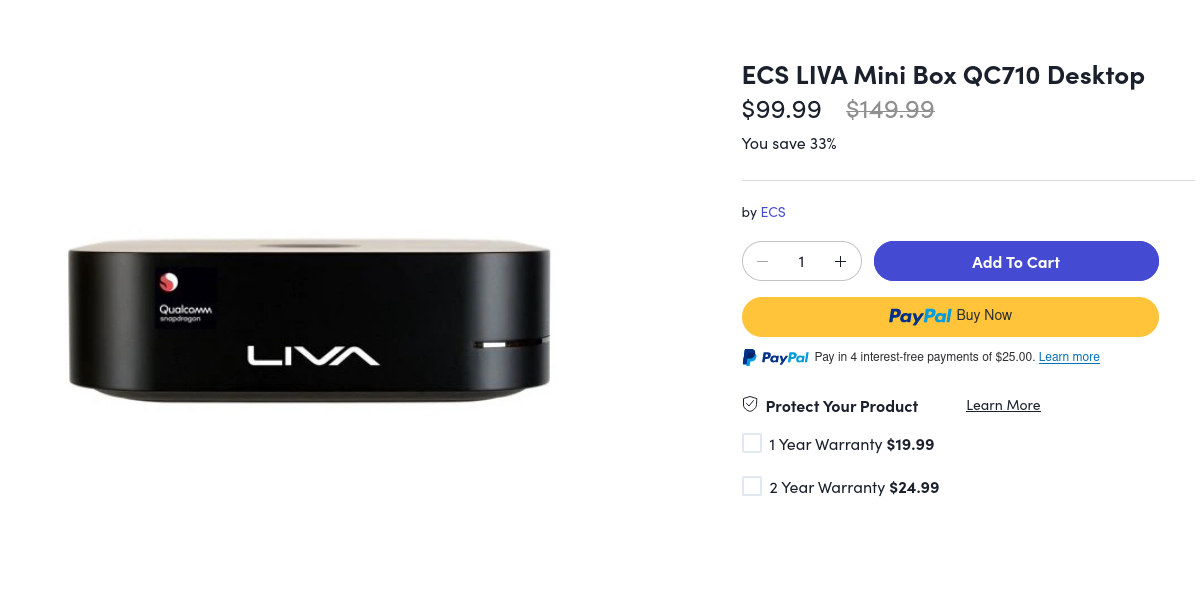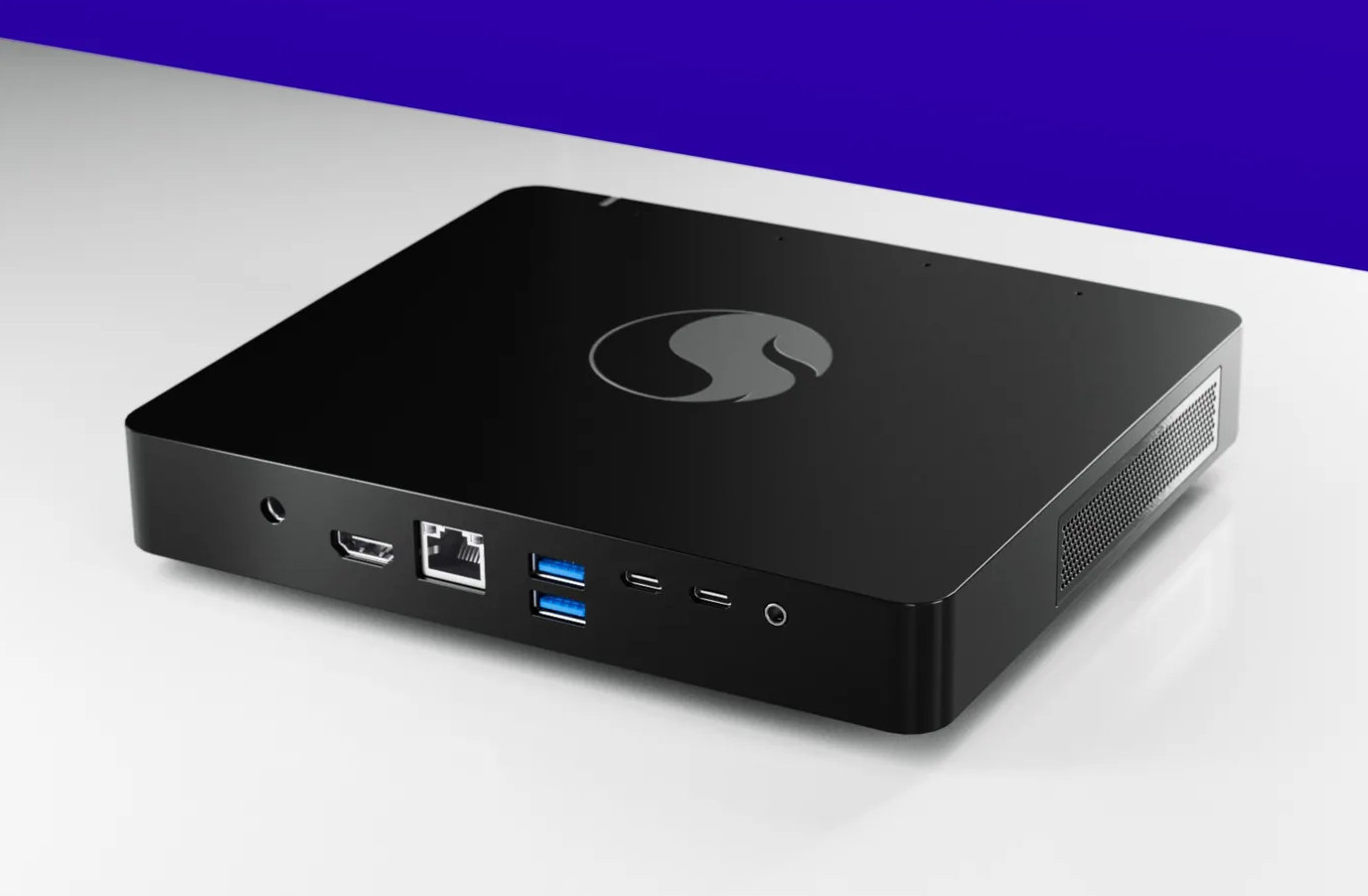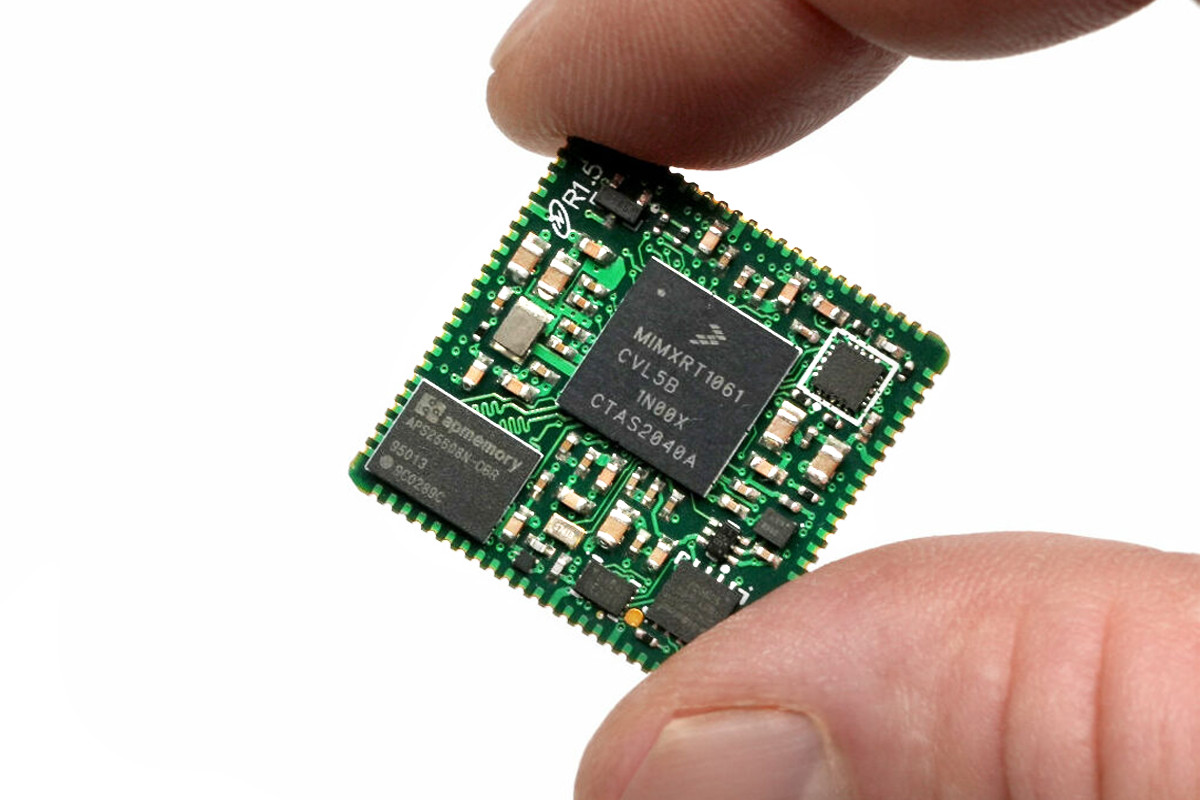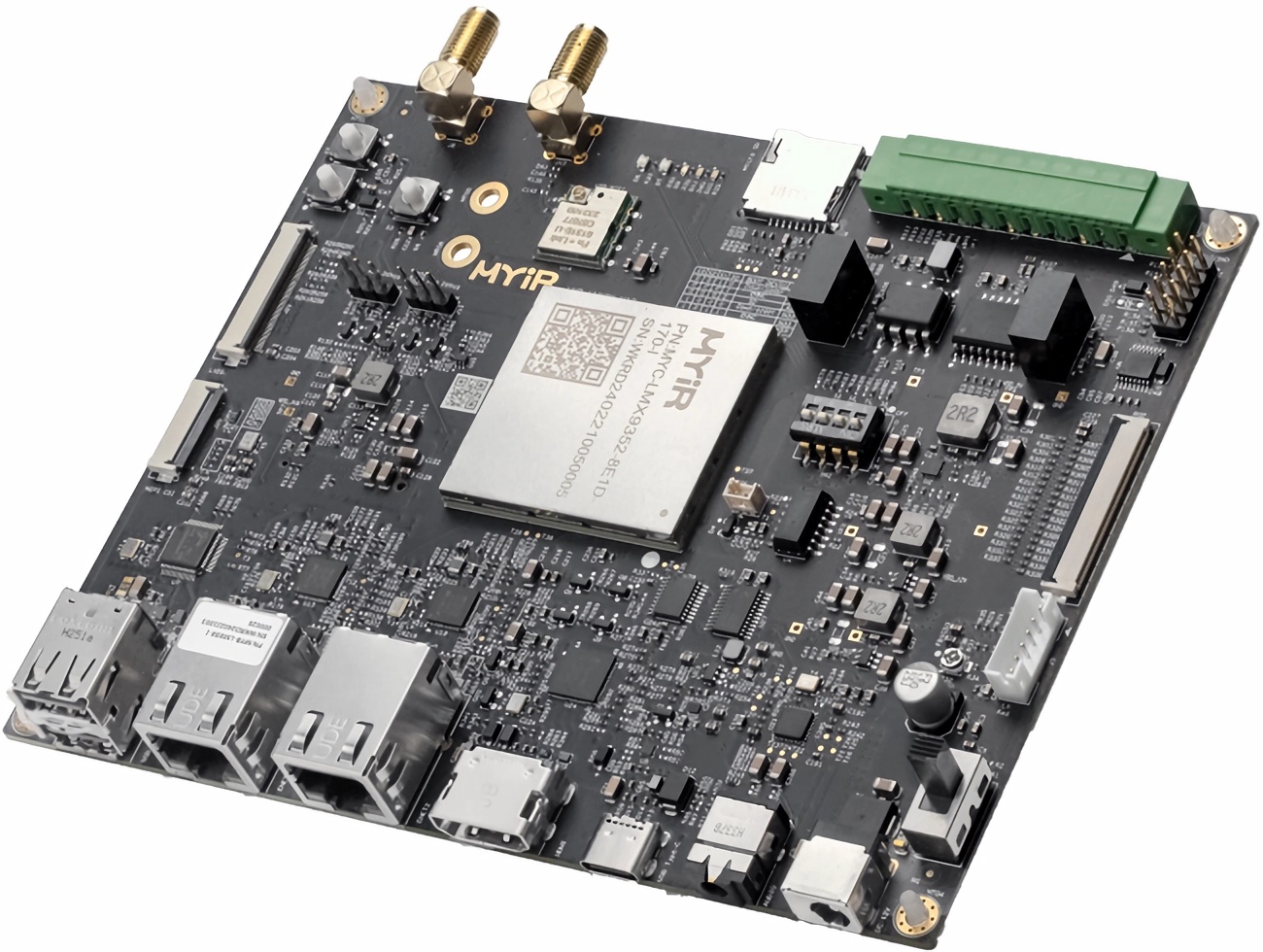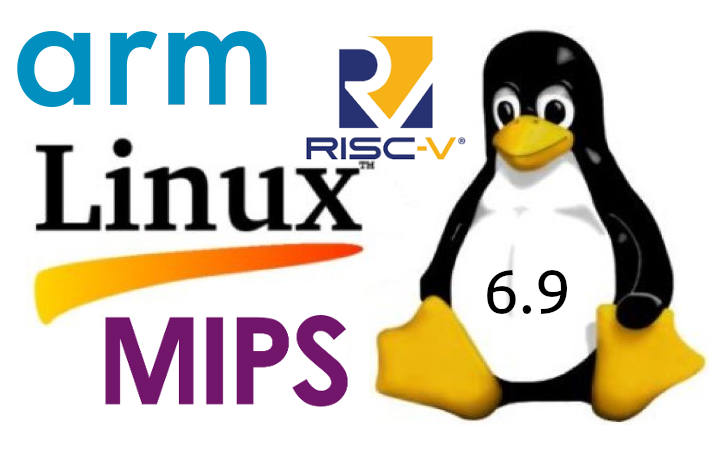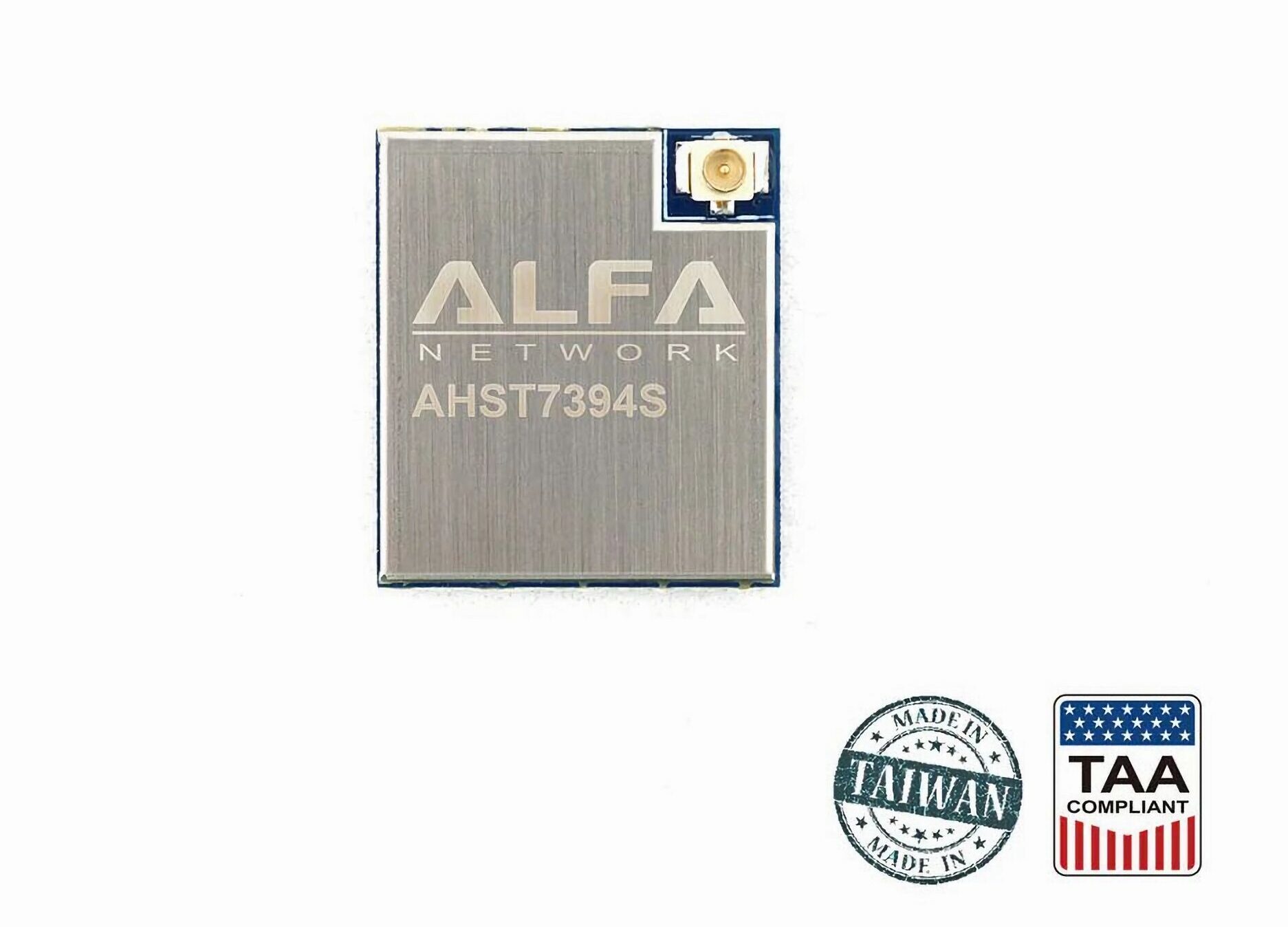ECS LIVA Mini Box QC710 Desktop powered by a Qualcomm Arm mini PC-looking developer kit was launched in 2021 for $219, and the company is now apparently getting rid of stocks and selling the remaining Snapdragon 7c devices for $99.99 on Stack Social. The system features a Qualcomm Snapdragon 7c (SC7180) octa-core Cortex-A76/A55 SoC, 4GB RAM, 64GB eMMC flash, HDMI output, 10/100Mbps Ethernet and WiFi 5, and several USB ports. As a reminder, here are the ECS LIVA Mini Box QC710 Desktop specifications: SoC – Qualcomm Snapdragon 7c Compute Platform (SC7180) with octa-core Qualcomm Kryo 468 (2x Cortex-A76, 6x Cortex-A55) CPU @ up to 2.4 GHz, Adreno 618 GPU System Memory – 4GB Storage – 64GB eMMC flash, MicroSD card socket Video & audio output – 1x HDMI port Networking 10/100M Ethernet WiFi 5 and Bluetooth USB 1x USB 3.2 Gen1 (5 Gbps) Type-A port 1x USB 2.0 Type-A port […]
Snapdragon Dev Kit for Windows features Qualcomm Snapdragon X Elite Arm SoC for AI PC application development
Qualcomm Snapdragon Dev Kit for Windows is a mini PC-looking development platform based on the Snapdragon X Elite 12-core Arm processor with up to 75 AI TOPS of performance designed to help developers natively port apps to the Elite X SoC and develop new AI applications besides the Copilot+ AI PC features developed internally by Microsoft. Although it’s slightly bigger, the external design looks similar to the Windows Dev Kit 2023 with a Qualcomm Snapdragon 8cx Gen 3 compute platform, but internally, the new devkit features the much more powerful 4.3 GHz X Elite 12-core 64-bit Armv8 Oryon processor coupled with 32GB LPDDR5x RAM and 512GB NVMe SSD, and offering a range of ports and features such as USB4 and WiFi 7. Snapdragon Dev Kit for Windows (2024) specifications: SoC – Snapdragon X Elite (X1E-00-1DE) CPU – 12-core 64-bit Armv8 Oryon processor clocked at up to 3.8 GHz, or 4.3 […]
NetBurner SOMRT1061 – A stamp-sized dual Ethernet SoM powered by NXP’s i.MX RT1061 crossover processor
The NetBurner SOMRT1061 is a System-on-Module (SoM) that comes in a very compact stamp-sized footprint that measures just 25.4mm x 25.4mm, yet boasts a rugged design and 67 usable GPIO pins with edge connectors. These features make this SoM ideal for a wide range of medical, industrial, and robotics applications. The SoM is built around the NXP’s i.MX RT1061 Arm Cortex M7 SoC, and features 1MB of internal SRAM, 32MB of external RAM, and 8MB of flash storage. It also features dual 10/100M Ethernet with PTP, an on-die temperature sensor, three FlexIO modules, two USB OTG 2.0 controllers, I2C, SPI, ADC, SD Card, CAN, UART, and many more. NetBurner SOMRT1061 System-on-Module (SOM) Specifications SoC – NXP i.MX RT1061 Arm Cortex-M7 @ 528MHz. Memory 1MB SRAM on the processor 32MB of external RAM Storage Flash – 1MB boot, 8MB application SDHC – Flash card interface Ethernet Up to two 10/100 Ethernet […]
New NXP i.MX 93-based system-on-modules launched by MYiR, Variscite, and Compulab
We have covered announcements about early NXP i.MX 93-based system-on-modules such as the ADLINK OSM-IMX93 and Ka-Ro Electronics’ QS93, as well as products integrating the higher-end NXP i.MX 95 processor such as the Toradex Titan Evaluation kit. Three additional NXP i.MX 93 SoMs from Variscite, Dart, and Compulab are now available. Targeted at industrial, IoT, and automotive applications, the NXP i.MX 93 features a 64-bit dual-core Arm Cortex-A55 application processor running at up to 1.7GHz and a Cortex-M33 co-processor running at up to 250MHz. It integrates an Arm Ethos-U65 microNPU, providing up to 0.5TOPS of computing power, and supports EdgeLock secure enclave, NXP’s hardware-based security subsystem. The heterogeneous multicore processing architecture allows the device to run Linux on the main core and a real-time operating system on the Cortex-M33 core. The processor is designed for cost-effective and energy-efficient machine learning applications. It supports LVDS, MIPI-DS, and parallel RGB display protocols […]
Linux 6.9 release – Main changes, Arm, RISC-V, and MIPS architectures
Linus Torvalds has just announced the release of Linux 6.9 on LKML: So Thorsten is still reporting a few regression fixes that haven’t made it to me yet, but none of them look big or worrisome enough to delay the release for another week. We’ll have to backport them when they get resolved and hit upstream. So 6.9 is now out, and last week has looked quite stable (and the whole release has felt pretty normal). Below is the shortlog for the last week, with the changes mostly being dominated by some driver updates (gpu and networking being the big ones, but “big” is still pretty small, and there’s various other driver noise in there too). Outside of drivers, it’s some filesystem fixes (bcachefs still stands out, but ksmbd shows up too), some late selftest fixes, and some core networking fixes. And I now have a more powerful arm64 machine […]
QEMU 9.0 released with Raspberry Pi 4 support and LoongArch KVM acceleration
QEMU 9.0 open-source emulator just came out the other day, and it brings on board major updates and improvements to Arm, RISC-V, HPPA, LoongArch, and s390x emulation. But the most notable updates are in Arm and LoongArch emulation. The QEMU 9.0 emulator now supports the Raspberry Pi 4 Model B, meaning you can run the 64-bit Raspberry Pi OS for testing applications without owning the hardware. However, QEMU 9.0 has some limitations since Ethernet and PCIe are not supported for the Raspberry Pi board. According to the developers, these features will come on board in a future release. For now, the emulator supports SPI and I2C (BSC) controllers. Still on ARM, QEMU 9.0 provides board support for the mp3-an536 (MPS3 dev board + AN536 firmware) and B-L475E-IOT01A IoT node, plus architectural feature support for Nested Virtualization, Enhanced Counter Virtualization, and Enhanced Nested Virtualization. If you develop applications for the LoongArch […]
Alfa Networks AHST7394S Wi-Fi HaLow module enables low-power, long-range IoT connectivity up to 1km
Taiwanese wireless equipment manufacturer, Alfa Networks, and US-based Wi-Fi HaLow semiconductor company, Newracom, have collaborated to develop the AHST7394S Wi-Fi HaLow module. The solder-down module is based on Newracom’s NRC7394 SoC, a low-cost and high-efficiency HaLow SoC chipset providing up to 17dbm output power and capable of connecting to a maximum of 8K devices within a single network. The NRC7394 also supports a standalone mode, which enables the execution of a wide range of IoT applications on the embedded ARM Cortex-M3 CPU. While HaLow is more energy-efficient than other Wi-Fi types, low-power operation modes such as legacy, TWT, and WMM-PS can reduce power consumption further. The AHST7394S Wi-Fi HaLow module supports a data rate of up to 15Mbps, over 600 times faster than LoRaWAN while maintaining a good range (over 1km). The second-generation HaLow module is perfect for building long-range, ultra-low-power networks in sub-1 GHz, license-exempt frequency bands. It is a […]
Yocto Project 5.0 “Scarthgap” released with Linux 6.6 and plenty of changes
The Yocto Project 5.0 codenamed “Scarthgap” has just been released with Linux 6.6, glibc 2.39, LLVM 18.1, and over 300 other recipe upgrades. As a result of the release, the developers have made it available for download (bz2 tarball). The Yocto Project, or Yocto for shorts, is a popular framework used to create custom embedded Linux distributions, and we’ve played with it over the year showing how to create a minimal image for the Raspberry Pi, and last year, we used it again when reviewing two industrial development boards, namely the VOIPAC IMX8M and ADLINK i-Pi SMARC 1200. Yocto is quite a powerful framework/build system with plenty of options that make it highly customizable, but the learning curve is fairly steep. Some other changes in Yocto Project 5.0 include: New variables: CVE_DB_INCR_UPDATE_AGE_THRES: Configure the maximum age of the internal CVE database for incremental update (instead of a full redownload). RPMBUILD_EXTRA_PARAMS: […]


